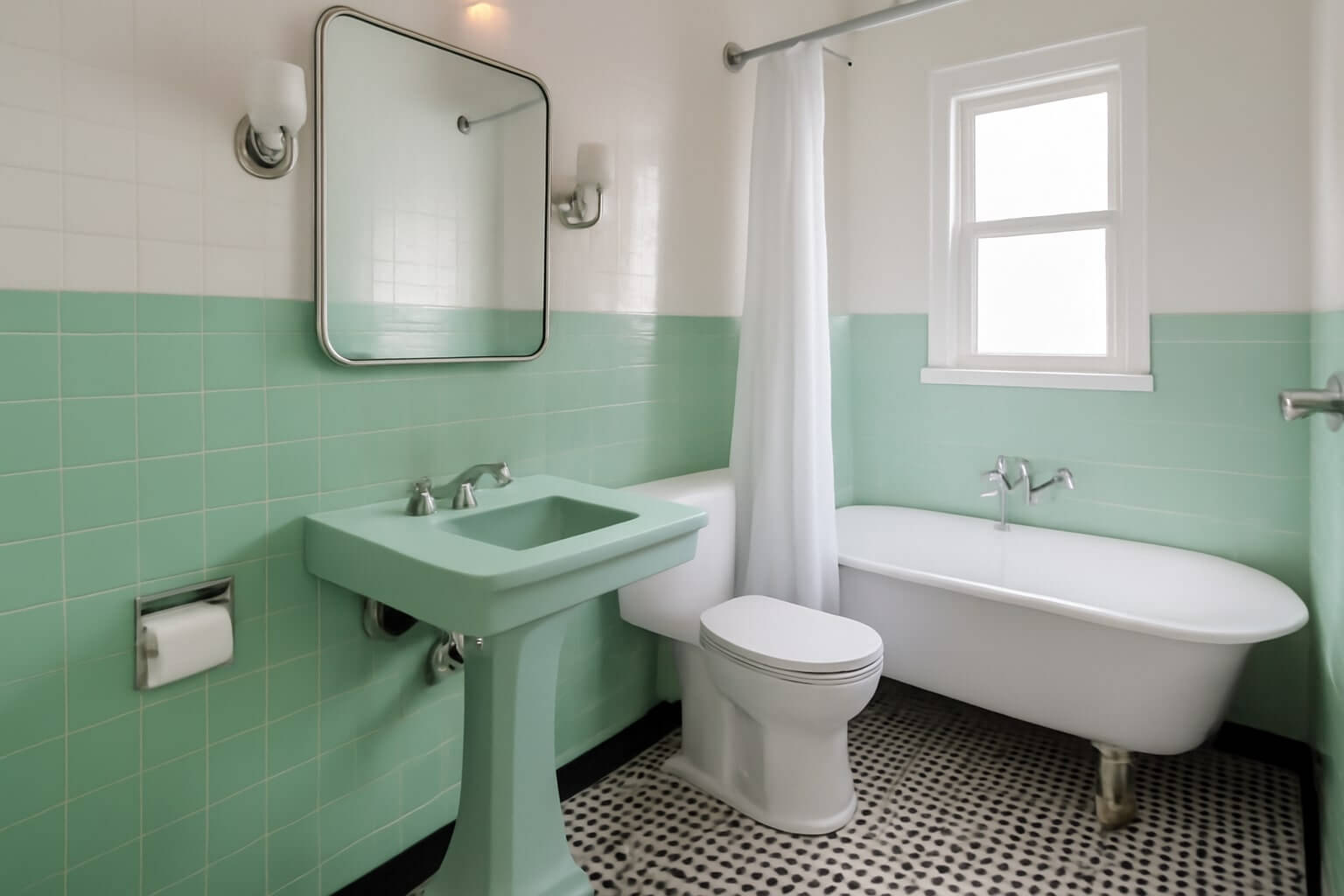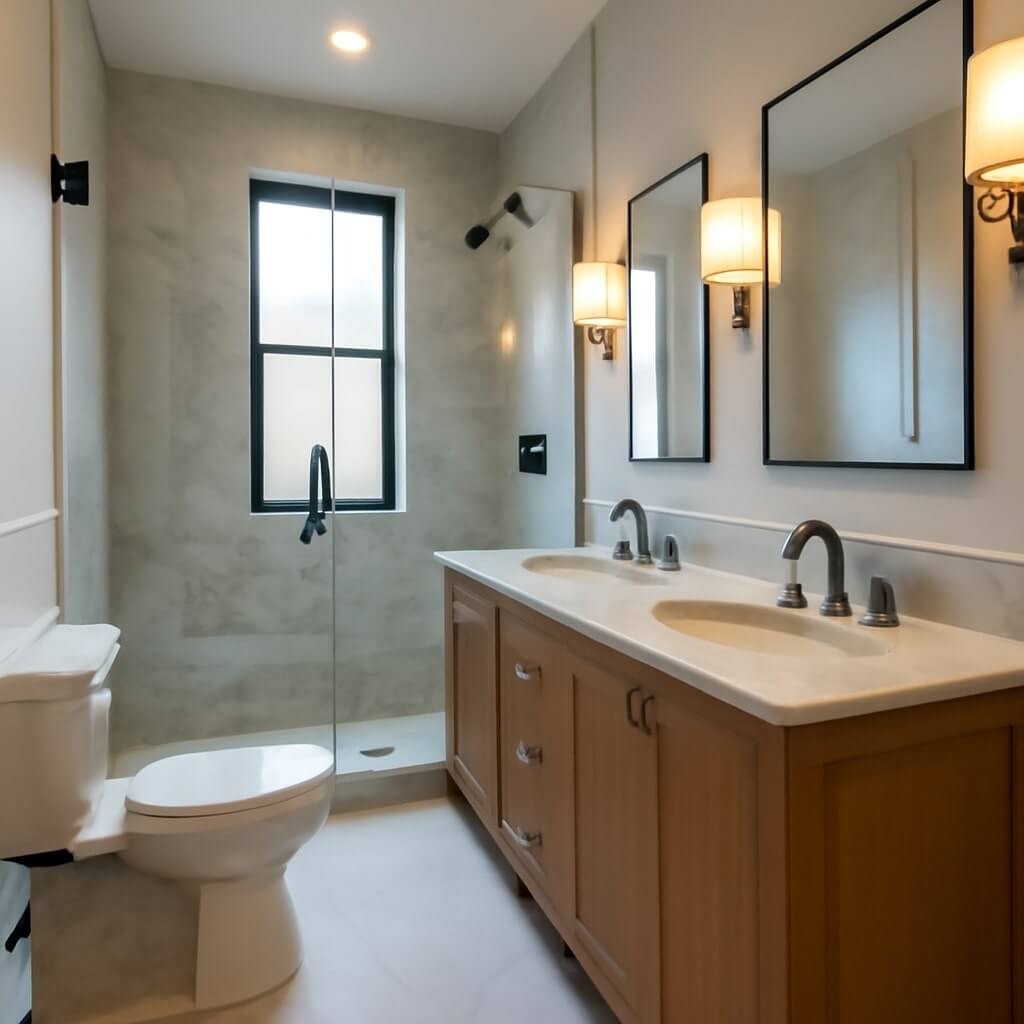The 1950s marked an era of vibrant and bold design choices, many of which have remained iconic in interior design to this day. In particular, 1950s bathrooms are known for their unique color schemes, tiled walls, and vintage fixtures. However, as times change, homeowners often seek to update these retro spaces without losing their nostalgic flair. A 1950s bathroom remodel offers the perfect opportunity to infuse modern functionality and comfort while preserving the charm of yesteryear.
In this article, we’ll explore how to modernize a 1950s bathroom without sacrificing its retro charm. From the right materials to color schemes and the perfect fixtures, we’ll provide all the insights you need to create a stylish yet functional bathroom.
Why Remodel a 1950s Bathroom?
Remodeling a 1950s bathroom involves more than just updating outdated fixtures—it’s about revitalizing the space to meet contemporary needs while honoring its mid-century aesthetic. Common challenges with 1950s bathrooms include:
- Outdated plumbing: Older pipes may no longer meet modern standards.
- Small spaces: Many 1950s bathrooms were designed for efficiency, not luxury.
- Deteriorating finishes: Classic materials like ceramic tiles may have seen better days.
But with a careful blend of modern touches and retro elements, it’s possible to keep the timeless appeal while making the bathroom more functional for today’s lifestyle.
Key Elements of a 1950s Bathroom Remodel
1. Color Scheme: Balancing Retro and Modern
In the 1950s, bathrooms often featured bold color schemes, with hues like mint green, baby blue, and soft pink. To retain the vintage vibe, consider:
- Soft pastels: Stick with the pastel color palette but incorporate modern materials such as glass tiles and matte finishes.
- Bold accents: Integrate black and white checkerboard floors, or add geometric patterns for a true vintage feel.
- Neutral tones: Modernizing the bathroom with shades like gray or beige can add a contemporary flair while allowing retro fixtures to pop.
2. Modern Fixtures with a Retro Twist
Keeping the charm of the 1950s doesn’t mean you need to sacrifice comfort or performance. Opt for modern fixtures with a vintage-inspired design:
- Pedestal sinks: These were common in 1950s bathrooms and are still a great choice for small spaces.
- Freestanding bathtubs: A clawfoot tub will not only add retro character but also offer a luxurious bathing experience.
- Vintage-inspired lighting: Choose light fixtures with a nod to mid-century design, such as globes or sputnik chandeliers, to maintain the retro aesthetic.
3. Tiles and Flooring: Classic with Modern Updates
The classic subway tile or mosaic designs of the 1950s continue to be popular, but updating the materials can improve durability and style:
- Glass subway tiles: Swap traditional ceramic tiles for glossy glass ones to introduce a modern touch while maintaining the traditional look.
- Heated floors: Adding underfloor heating ensures comfort during the colder months, a feature that wasn’t available in the 1950s but is now a popular upgrade.
- Vintage-style hexagonal tiles: Perfect for adding a retro touch to the floor or as a backsplash.
4. Space Optimization
Many 1950s bathrooms were smaller than modern bathrooms, often featuring compact fixtures and efficient layouts. To make the most of a small bathroom:
- Wall-mounted vanities: These open up the floor space, making the room feel larger while maintaining a sleek, modern look.
- Mirrored storage: Install a mirrored medicine cabinet to reflect light and provide additional storage.
- Sliding doors: If the space is tight, consider replacing traditional swinging doors with sleek sliding doors to maximize space.
Essential Tips for a Successful 1950s Bathroom Remodel
- Retain key vintage features: Always aim to preserve iconic elements like pedestal sinks, tile work, or vintage lighting to maintain the charm of the original design.
- Embrace new technology: Modern plumbing fixtures, energy-efficient lighting, and smart home technology can provide convenience and comfort while keeping the retro aesthetic intact.
- Plan for durability: Choose materials that are not only stylish but also durable and easy to maintain, such as ceramic tiles, glass, or stainless steel.
FAQ: Your 1950s Bathroom Remodel Questions Answered
1. What’s the best way to update a small 1950s bathroom?
Maximize the space by choosing smaller fixtures, such as a compact pedestal sink and a wall-mounted toilet. Opt for a clear glass shower enclosure to make the room feel larger. Utilize vertical storage solutions like shelves and medicine cabinets to save space.
2. Can I mix retro elements with modern design?
Yes! The beauty of remodeling a 1950s bathroom is the ability to combine old and new. A classic pedestal sink with modern faucets, a retro-inspired tile pattern, and contemporary lighting are a few ways to blend the two styles seamlessly.
3. Should I replace the tiles in a 1950s bathroom?
While the original tiles may have some historical value, they may not be as durable or up-to-date as modern alternatives. Consider replacing them with similar styles in more modern materials, like glass or porcelain, to maintain the retro look while ensuring long-lasting quality.
4. What is the cost of remodeling a 1950s bathroom?
The cost of a 1950s bathroom remodel can vary widely depending on the scope of work, the materials chosen, and the size of the space. On average, a mid-range remodel can cost anywhere from $5,000 to $15,000, while high-end renovations can exceed $20,000.
5. How do I keep the retro charm without making the bathroom feel outdated?
By mixing vintage design elements with modern upgrades, you can preserve the retro charm without making the space feel outdated. Use modern materials for flooring and fixtures while maintaining vintage colors and tile patterns for an authentic look.
Conclusion: A Timeless Bathroom That’s Perfectly You
Remodeling a 1950s bathroom allows you to bring a bit of history into your home while ensuring it meets modern-day needs. With careful planning, you can combine the best of both worlds: the unique character of mid-century design and the conveniences of modern technology. Whether you’re retaining vintage elements like a clawfoot tub or introducing sleek, contemporary touches, your 1950s bathroom remodel can be both stylish and functional.
Remember, the key to a successful remodel lies in finding the right balance between preserving retro charm and embracing modern functionality. With the right design choices, your 1950s bathroom can be transformed into a timeless space that’s both practical and filled with character.



